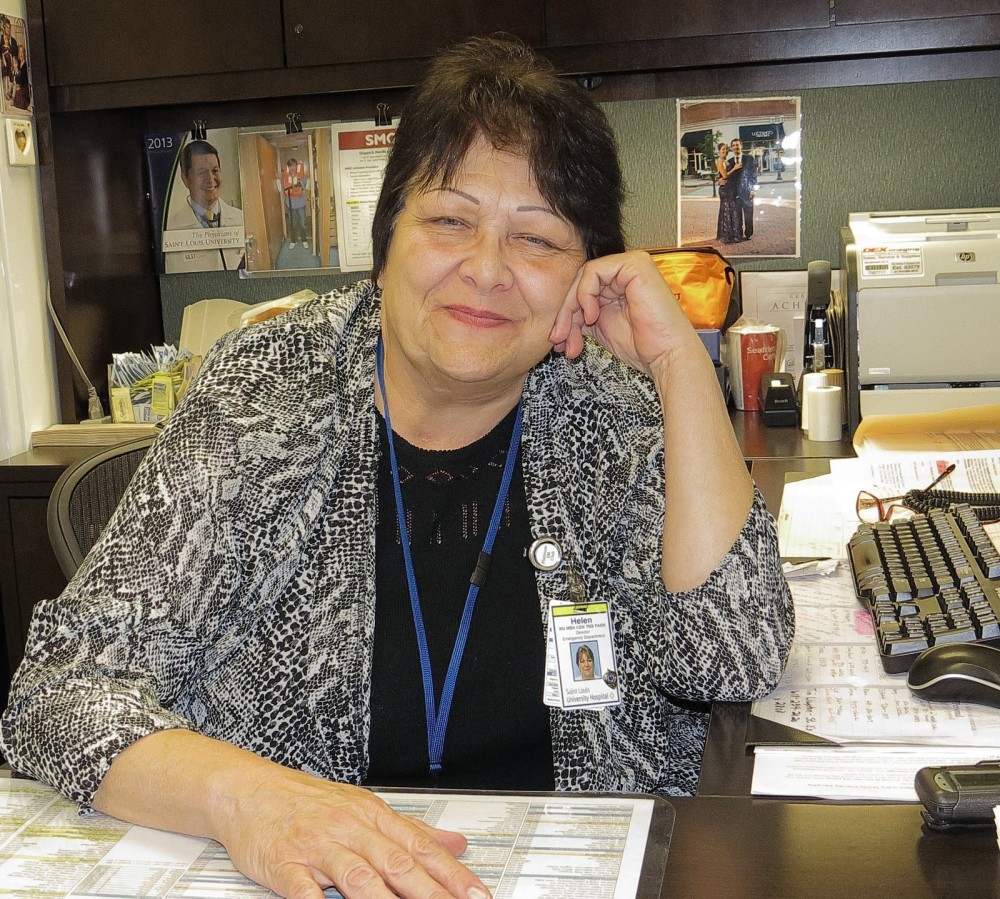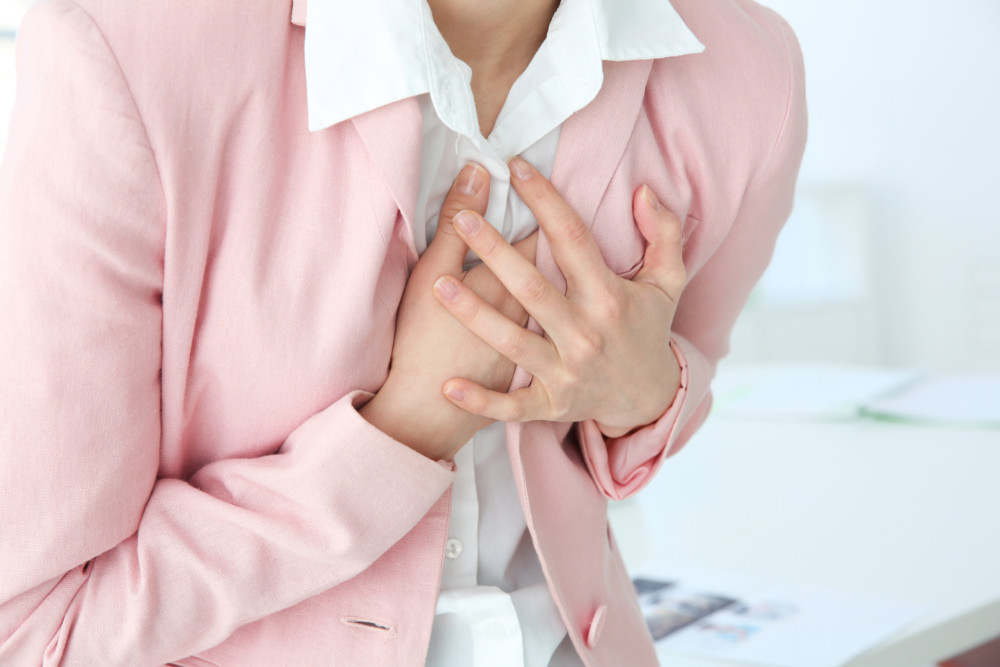By Harry Jackson Jr.
St. Louis Post-Dispatch.
The day after Helen Sandkuhl’s heart attack, she recalled all the mistakes she’d made. Startling because, “I could have died,” she said.
“I should have called an ambulance; they have all the equipment in case something goes wrong.”
And a bit embarrassing because she’s the administrative director of the emergency department for St. Louis University Hospital.
“When I got there, some 30 people were following me around and crying,” she said, noting that it’s common for people who had her condition to die before getting to the hospital.
That’s why she’s spreading the word to women: Know the symptoms of heart disease and heart attack, know risk factors, trust your gut feelings and don’t shrug off that feeling of “impending doom,” regardless of who says otherwise.
BECOMING A PATIENT
On June 11, 2012, Sandkuhl had an episode of indigestion, primarily nausea. She had been experiencing the indigestion on-and-off for some days. She drank some 7-Up.
“That’s what we think fixes it,” she said. The 7-Up didn’t work.
Then she took a big swig of Pepto-Bismol. That didn’t work. She decided to take a hot shower.
“That fixes everything,” she said. “A hot, relaxing shower. I have a high-stress job, and that usually helps. I was really in denial.”
She found breathing increasingly difficult, and then, “I felt this crushing pressure on my chest and a pain across my back,” she said. “I said, ‘My God, I’m having a heart attack.'”
Her daughter wanted to call an ambulance. Instead Sandkuhl had her daughter drive her to St. Louis University Hospital.
“I can see the hospital from my home; I didn’t feel I needed to call.”
The emergency room staff knew when she walked in the door that she was succumbing to heart failure.
“I had the doctors and everyone leave the room when I put on my gown,” she said. “I didn’t want my co-workers seeing me naked.”
Finally on a treatment table, she recalls being surrounded by a lot of people just before she blacked out. Her heart stopped. She had to be shocked back to life.
When she came to, people were crying. One nurse, as they walked to the treatment room, comforted her.
“She asked if I wanted to pray with her,” Sandkuhl said. “That’s what got me through this, God and Dr. Neumayr. The examination found a fully blocked coronary artery. An interventional cardiologist inserted a stent in the vessel.
WOMEN ARE DIFFERENT
Dr. Robert H. Neumayr, the cardiologist on duty when Sandkuhl arrived at the emergency room, said not recognizing the symptoms of heart attacks was more common than it should be. The medical community calls Sandkuhl’s symptoms “atypical” because they are different from men’s symptoms of chest pain and left arm pain.
The American Heart Association and the Heart Foundation note that women’s heart disease symptoms may include nausea, sweating, abdominal pain, weakness and fatigue and are often dismissed as acid reflux, flu, stress, aging and other more benign conditions.
“It’s just that it hasn’t been studied as much as we’d like,” Neumayr said. “It’s not well understood. It’s well understood that they don’t exhibit the same symptoms. But why, nobody really knows.” The result is that by the time women seek help, they’re often near death.
Sandkuhl coded only minutes after arriving at the hospital. “If that had happened in the car, I probably wouldn’t have made it,” she said. “I should have called an ambulance. I knew I should have, my daughter knew I should have, but I lived so close. …”
Neumayr urged women to trust their gut feelings and to watch for signs that don’t go with everyday aches and pains. Often, women disregard their suspicions, too often on the advice of others, including family doctors.
“In my experience, many patients said they felt there was something just not right in their symptoms. They were concerned,” but they didn’t take action, he said. “There’s a term, ‘sensing impending doom,'” he said. “There’s truth to that.”
Some symptoms not to be ignored, he said, include indigestion that continues longer than normal and is not responsive to antacids.
“I see it frequently where women come in with cardiac arrest, and their family says they’ve been chomping on antacids for a week,” Neumayr said. “Women can have the classic symptoms, too, but they more typically have atypical symptoms,” he said.
More women die from heart attack, stroke or some other form of cardiovascular disease than all of the cancers combined. Neumayr said that not knowing why the symptoms are atypical is because they’re not studied enough. “It’s a common demon in all medical trials, most medical trials end up being older white males, for medicines, procedural success,” he said. “…That’s the largest population that uses medical care; that’s the group that has the most resources and the most resources get the best care, and they’re probably the most common patients.”
SPREADING THE WORD
Looking back, Sandkuhl said, she made the mistakes she’s seen patients make for decades. She had to make some changes in her life, including cutting out fried foods and ending a 35-year smoking habit.
“Of all the things I’ve ever done in my life, that was the most difficult,” she said. “I even tried (electronic cigarettes), which weren’t supposed to be as harmful. They were terrible. I just stopped cold turkey.” She also has started walking.
“I was so lucky; I was so close,” she said. Women should watch their risk factors, such a blood pressure, cholesterol, family history, smoking. And they need to be vigilant with medical care, she said. “I’ve had back pain, but I never once associated it with my heart.” She added: “With women and heart disease, it’s true that what you see is not what you get.”















































































































































































































































































































































































